ISO
MU Survey 2024: Moderate Volume tests mu in moderation
In 2023-2024, Westgard QC conducted a survey of 1,300 laboratories around the world. Do moderate volume laboratories moderate their use of measurement uncertainty?
Measurement Uncertainty Survey Results: Do moderate volume labs moderate their mu?
September 2024
Sten Westgard, MS
See all the Global MU Survey Results:
- 25 Insights into the Global Variations in the Use and Implementation of MU
- The Global Practice of Measurement Uncertainty (minus the US)
- Europe sets the Standard
- The US stands alone
- Rising Asia, rising uncertainty
- Middle East, middling uncertainty
- Africa, where mu is new
- South and Latin America, a special case
Methodology: From 2023-2024, Westgard QC conducted a global survey of laboratories about their use (or not) of measurement uncertainty. The labs were solicited by the Westgard website, the Westgard e-newsletter, advertising on Facebook and LinkedIn, as well as personal appeals across social media. More than 1,300 laboratories from more than 110 countries participated in the survey.
For this article, we're going to look at labs that report between 100,000 to less than 1 million tests a year.
What kind of labs answered the survey?
In 2023-2024, Westgard QC conducted a survey of 1,300 laboratories around the world. Do high volume laboratories have the highest measurement uncertainty implementation?
Measurement Uncertainty Survey Results: High Volume, High MU?
September 2024
Sten Westgard, MS
See all the Global MU Survey Results:
- The Global Practice of Measurement Uncertainty (minus the US)
- Europe sets the Standard
- The US stands alone
- Rising Asia, rising uncertainty
- Middle East, middling uncertainty
- Africa, where mu is new
- South and Latin America, a special case
Methodology: From 2023-2024, Westgard QC conducted a global survey of laboratories about their use (or not) of measurement uncertainty. The labs were solicited by the Westgard website, the Westgard e-newsletter, advertising on Facebook and LinkedIn, as well as personal appeals across social media. More than 1,300 laboratories from more than 110 countries participated in the survey.
African laboratories often figure at the lower end of the performance spectrum. When it comes to mu, how do they stack up? For this article, we're going to look at labs that report over 1 million tests a year.
What kind of labs answered the survey?
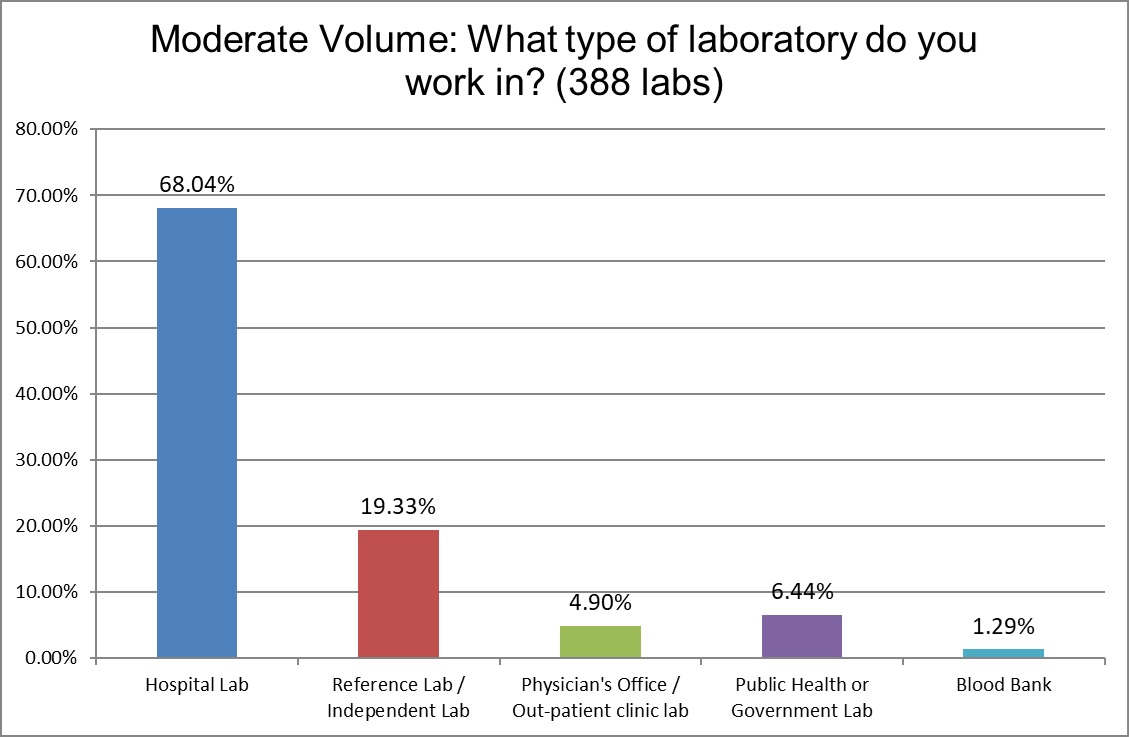
Almost two-thirds of moderate volume labs responding were hospital labs, and over a quarter of the responses came from reference or independent labs.
So how many laboratories calculate measurement uncertainty?
Just over 60% of moderate volume labs, lower than the two-thirds of high volume labs that calculate measurement uncertainty.
What kind of measurement uncertainty is calculated?
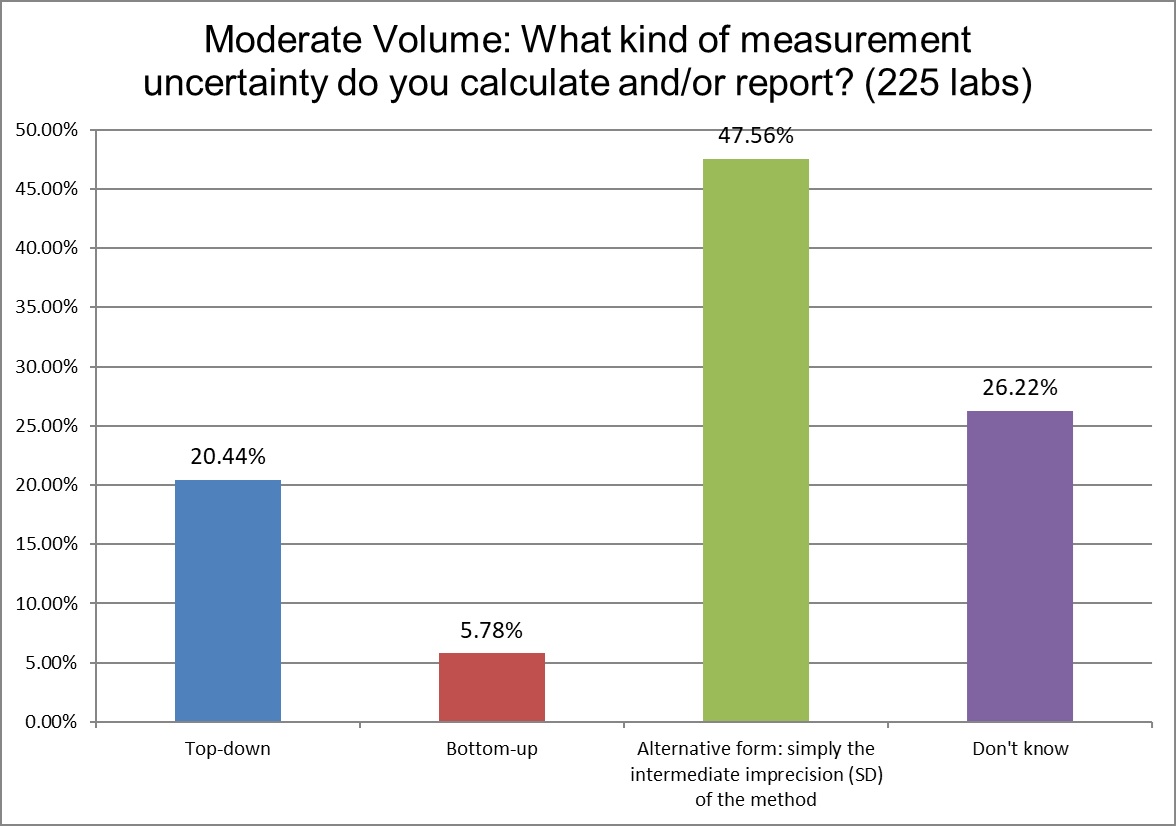
In the reporting of mu, higher and moderate volume laboratories are very similar. Over 20% of these labs are calculating top-down mu. Less than half use their SD for measurement uncertainty. Over 1 in 4, however, don't know what kind of mu they calculate.
What source document is used for measurement uncertainty?

Over a third of the moderate volume labs don't know what source they use to calculate mu. Just over a quarter use the GUM as their guidance for calculating QC.
What regulations guide the use of measurement uncertainty?
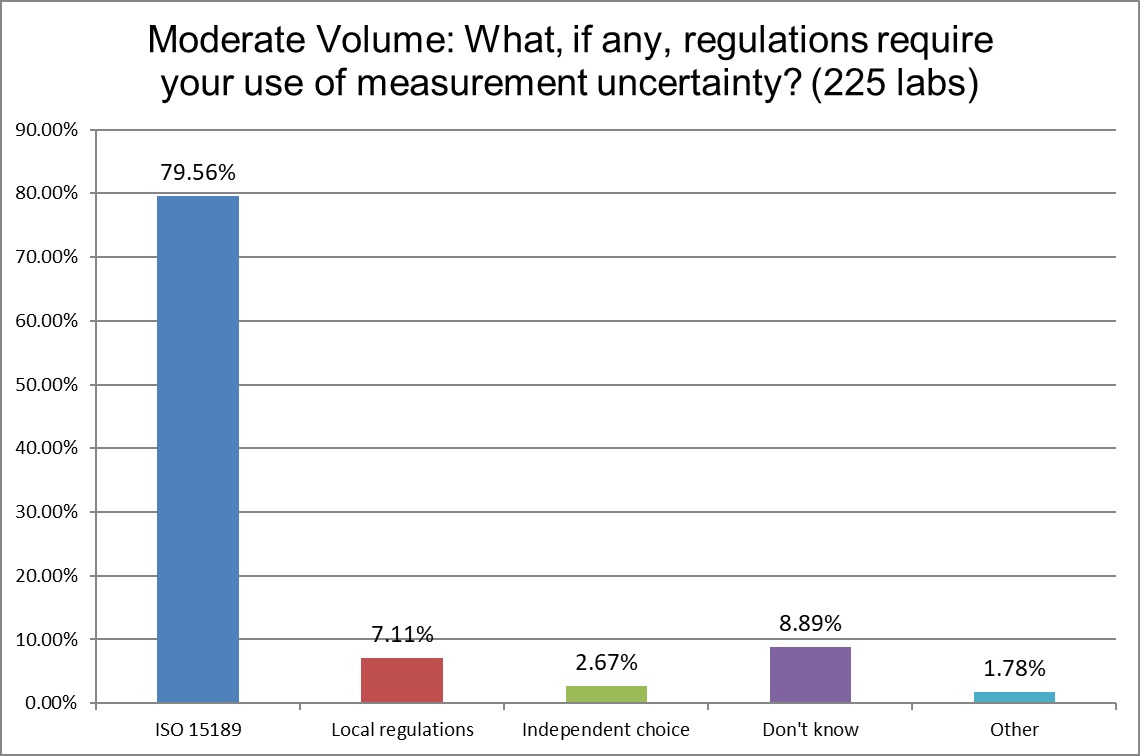
Not surprisingly, ISO 15189:2022 is the overwhelmingly majority reasons for moderate volume labs to calculate measurement uncertainty.
What concepts of measurement uncertainty are labs familiar with?
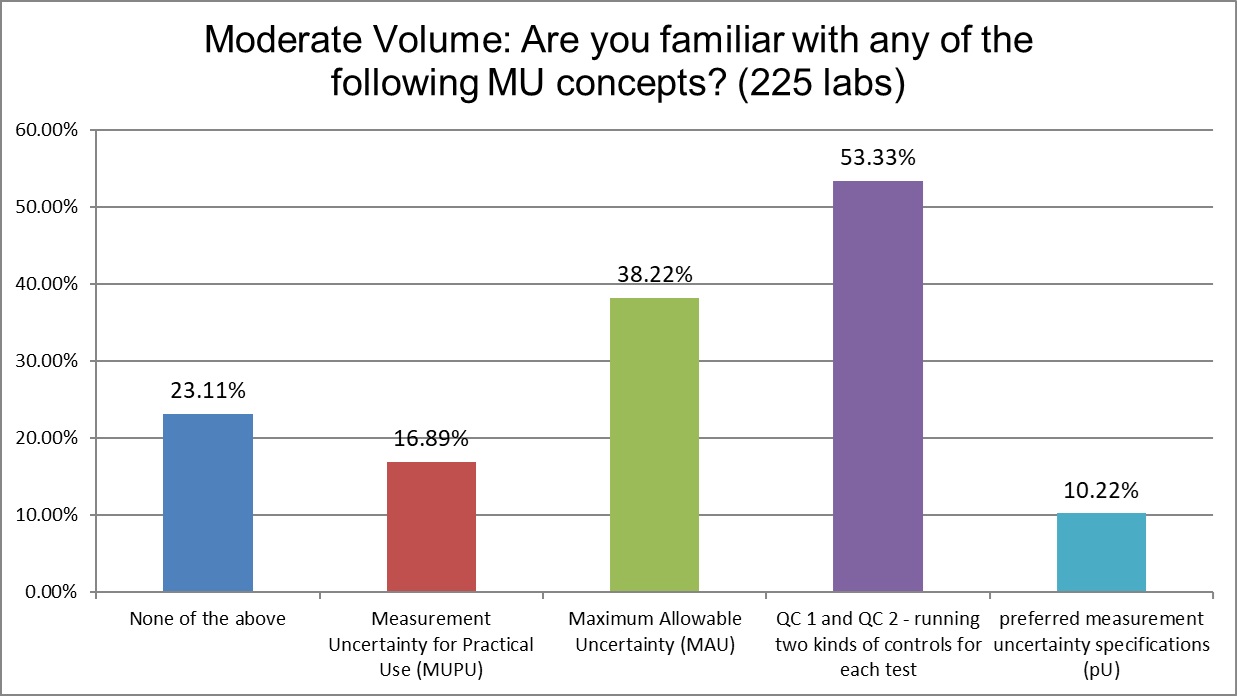
[please note that multiple answers were allowed for this question]
Over half of moderate volume labs are familiar with QC 1 and QC 2, two kinds of controls for measuring uncertainty. Just over 38% are familiar with MAU.
Are laboratories willing to spend twice as much on control materials in order to calculate measurement uncertainty?
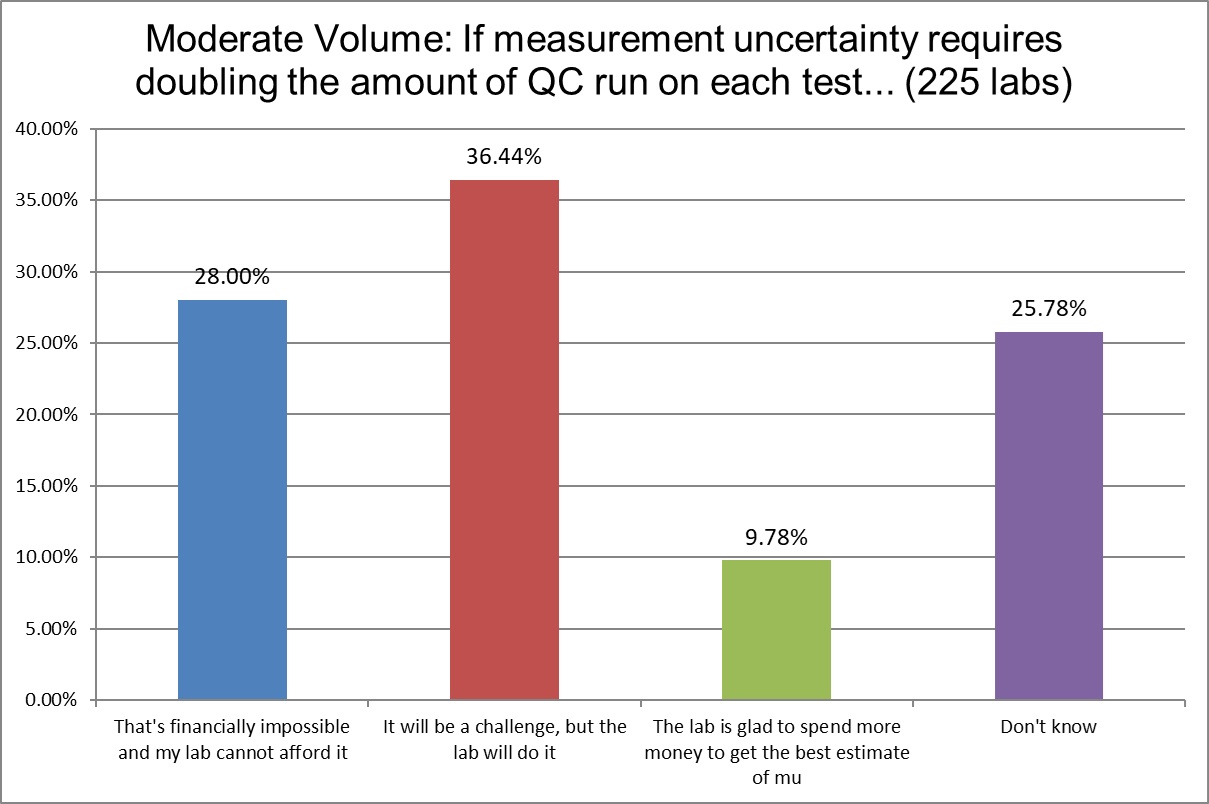
Just over a 45% of moderate volume labs calculating mu say they can afford to double their QC (when you put those who can and those who have a challenge but will do it). But almost 30% of these labs cannot afford this extra expense.
How do labs handle bias in the calculation of measurement uncertainty?
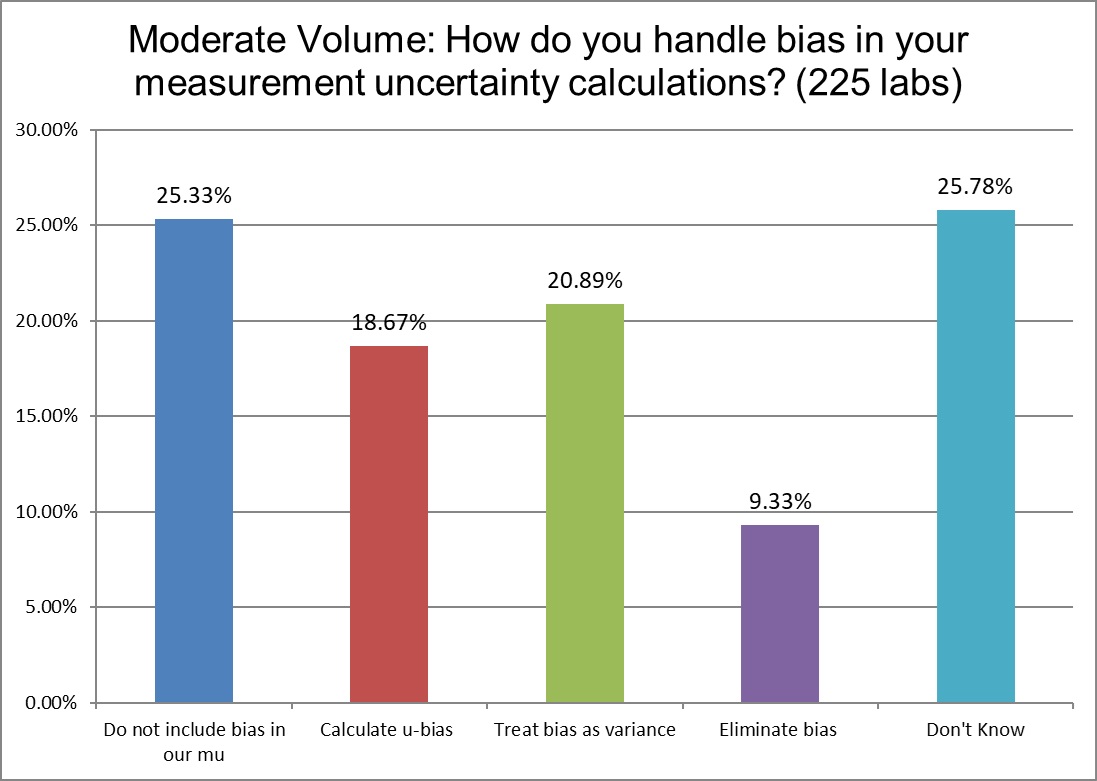
The most common way that moderate volume laboratories handle bias is that they don't know. A quarter of moderate volume labs don't include bias in their mu. The next most common approach is to treat bias as a variance.
Do laboratories report measurement uncertainty to their clinicians and patients?
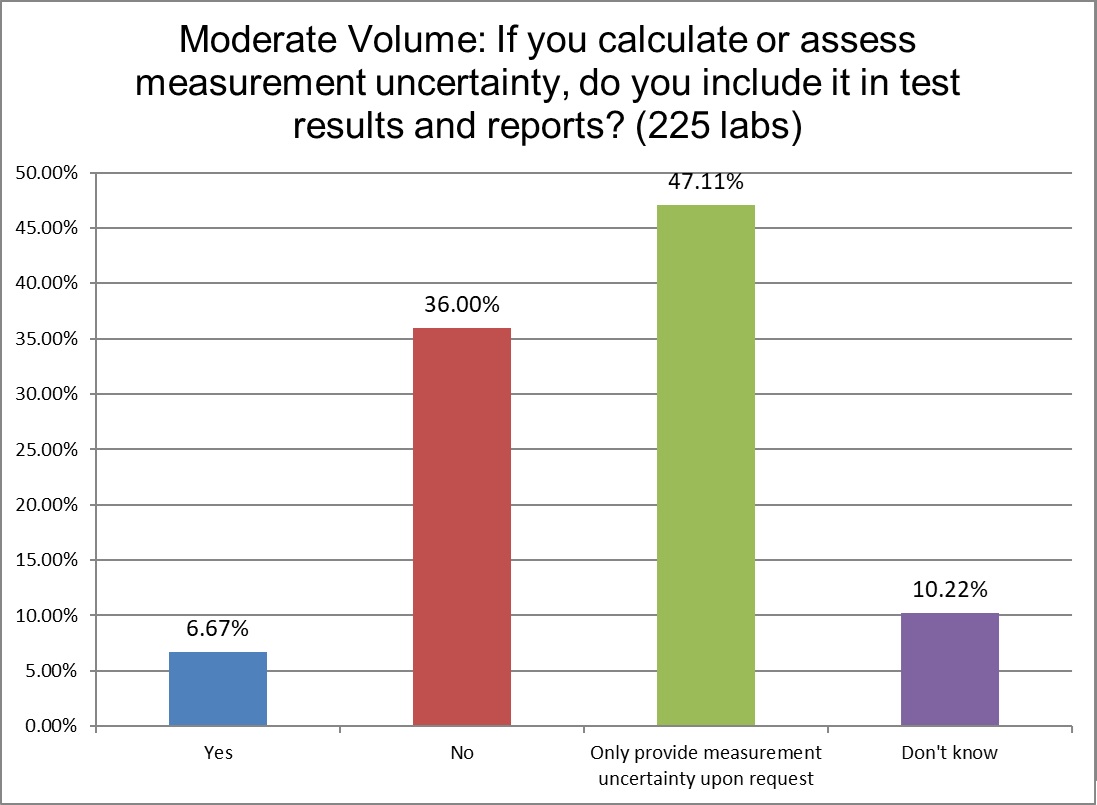
Nearly 80% of moderate volume labs do NOT report measurement uncertainty routinely. Nearly half of those labs will make it available upon request, however. Even though these moderate volume labs calculate mu, less than 7% routinely report them. That however, if higher than the rate of high volume labs.
How do laboratories make use of measurement uncertainty?
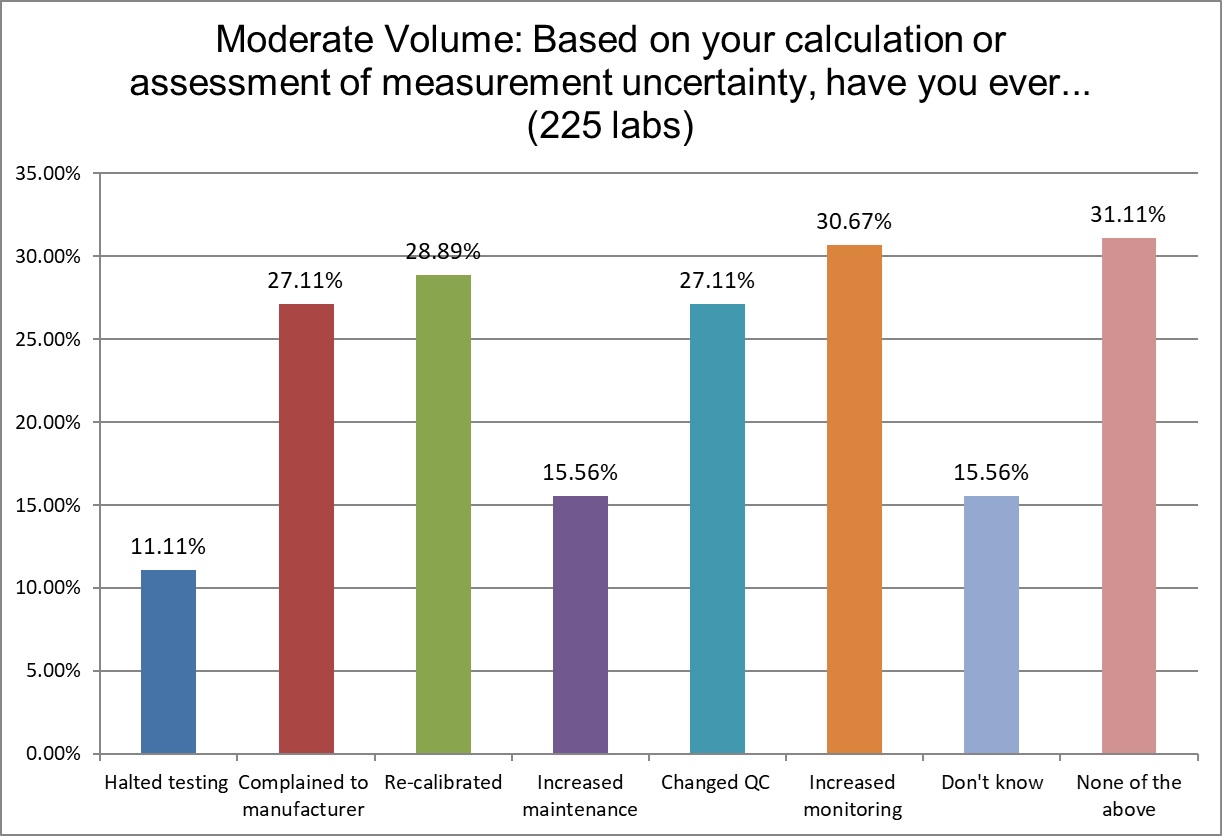
[Please note that laboratories were allowed to select as many answers as they wanted.]
The most common thing moderate volume laboratories that calculate mu do with their mu is nothing.
The second most common step is to increase monitoring of the method. The third most common thing is to recalibrate the method. Less than 12% have ever halted testing because of mu, which is a lower rate than high volume laboratories.
Have clinicians asked or requested measurement uncertainty from the laboratory?

Almost 40% of moderate volume laboratories have never had any requests for mu. Over 30% of labs say they haven't had any request in a year. Just over 10% don't know if clinicians have ever requested mu.
Let's underline this: over 95% of high volume laboratories do not have any meaningful clinician requests for mu. But that's still more than what happens in high volume laboratories.
Do clinicians ever act upon measurement uncertainty?

Just under 40% of moderate volume labs that calculate mu state that clinicians have never acted upon those calculations. Just under 35% of labs admit they don't know if their measurement uncertainty has ever been used. Just over 20% have had clinician uses of mu less than once a year.
Underline this: among moderate volume laboratories that calculate mu, nearly 98% of those labs have no routine clinical use (that they know of) of measurement uncertainty. But that's actually a higher rate of use than the high volume laboratories.
For those laboratories that don't calculate measurement uncertainty, why not?
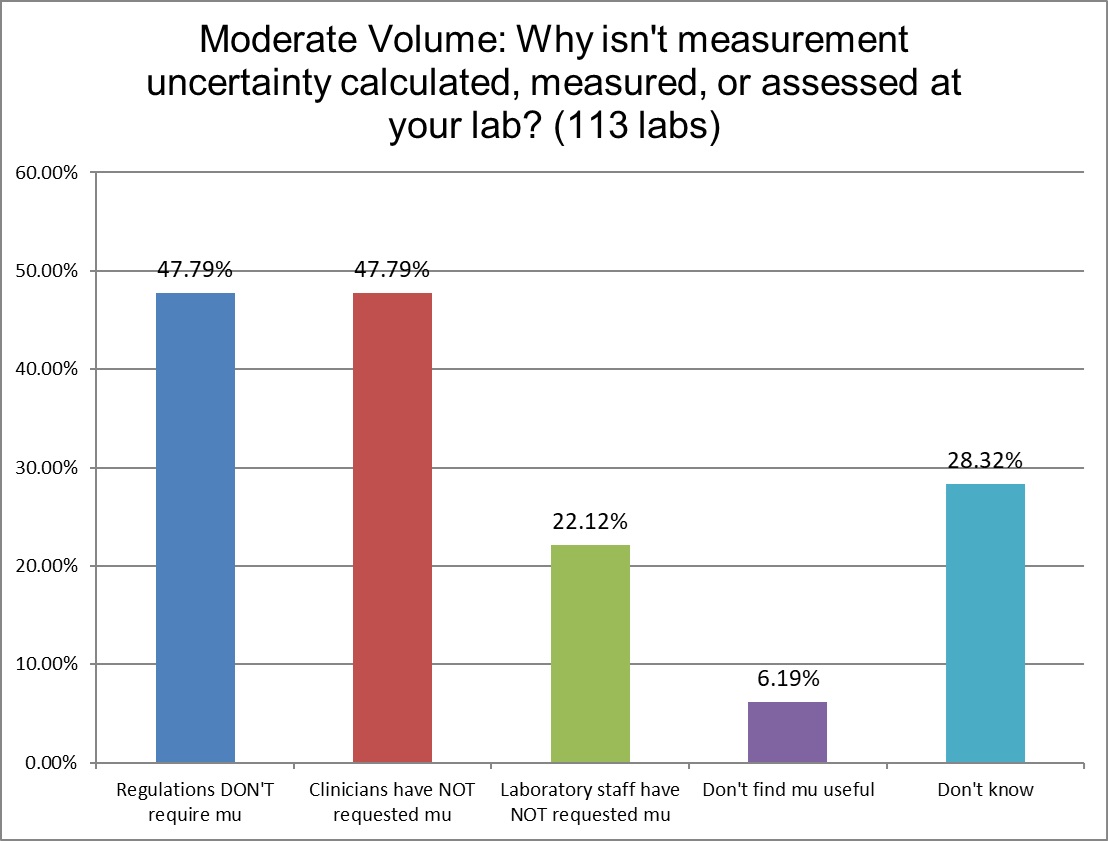
There are two major reasons moderate volume labs say they don't calculate mu is the lack of regulatory mandate and a lack of clinicians request.
What would motivate laboratories to adopt measurement uncertainty?
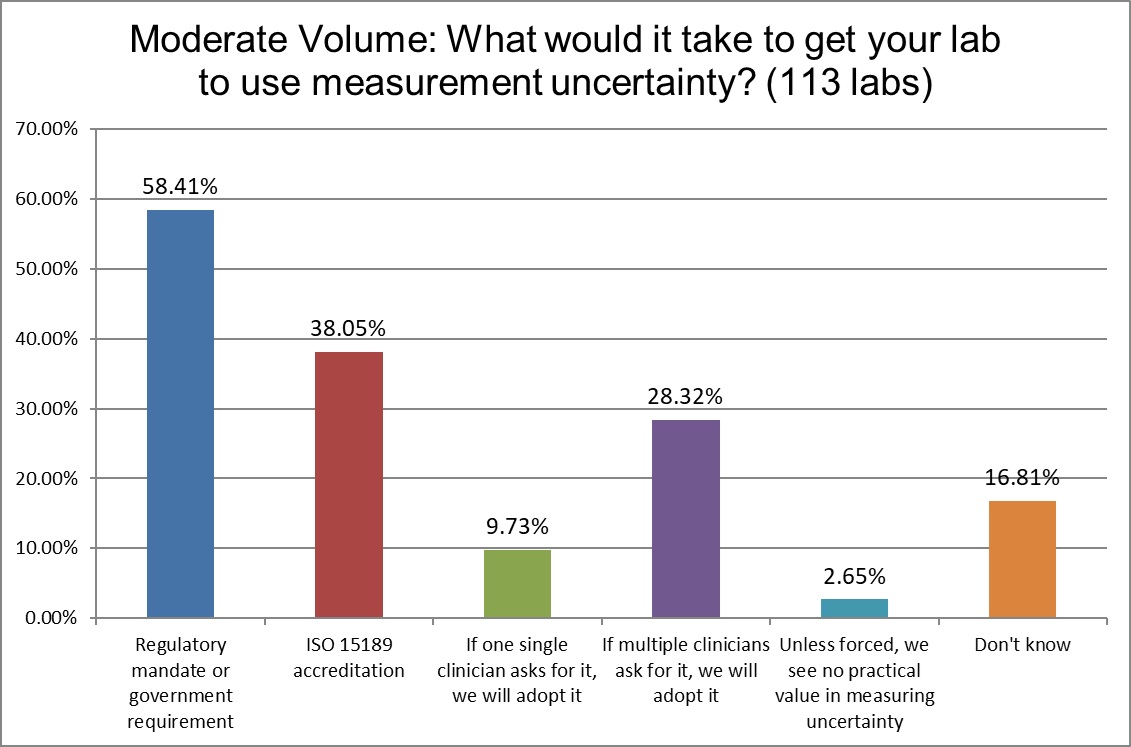
As we've seen for most laboratories, a regulatory mandate or ISO 15189 accreditation would motivate labs to adopt mu.

